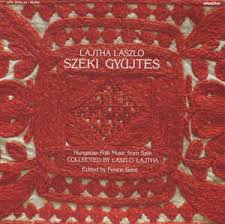László Lajtha first travelled to Szék (Romania), in December 1940, and collected folk music there until January 10, 1941. His interest in folk music, however, started years earlier, in the 1910s, with his folk music collecting trips to Transylvania. After 30 years he began to focus on instrumental music, which was less well known, and in February of 1941 he organized travel for local singers from Szék, to Budapest, Hungary, in order to record their traditional music. On 17–22 February 1941, Gyula Ortutay helped Lajtha record the Szék performers in the Magyar Rádió (Hungarian Radio) studio. These records were published through Patria Audio. Lajtha, from the outset of his collecting work, emphasized that when documenting folk music, transcribing lyrics or scores is not enough—the original voices and sound recordings are essential. The Szék Collection contains every document in connection with these recordings: letters, documents etc., which also demonstrate the circumstances of traveling in 1940–1941. This important collection reflects the life of Hungarian minorities living in Transylvania. After collecting and recording these works Lajtha also dealt with the Szék Collection by writing academic analysis of its content, but he could no longer travel there.
In the 1960s and 1970s, Ferenc Sebő and Béla Halmos, the main figures of the dance house movement, rediscovered the Patria recordings and learned the folk songs and music. During the Kádár era, the dance house movement offered an alternative form of rebellion; instead of the communist-approved folk culture, the dance house movement was based on a different interpretation of folk traditions and culture.

